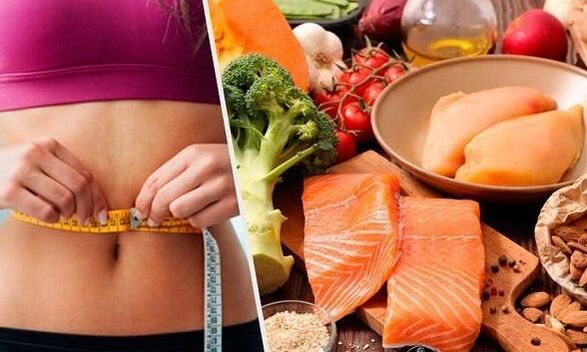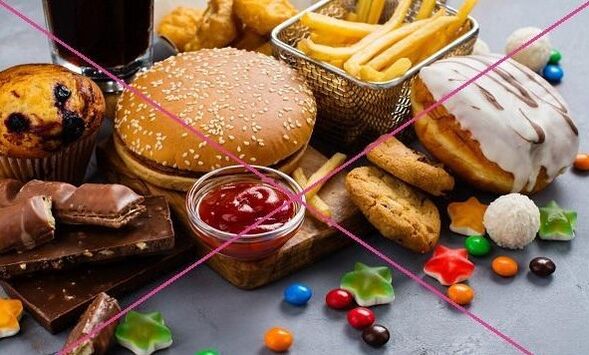Ketogenic diet (keto) is a very low diet that helps burn fat. It has many advantages for better weight loss and health, but also some side effects.

- Plus from a keto diet
- That is forbidden on a keto diet
- How to find out what you have in Ketoss?
- Dietary side effects and how to avoid it
Ketogenic diets are similar to low carbohydrate diets such as Atkins or Lchf Diet. This diet often ends with ketogenic more by accident. The main difference between a strict LCHF and Keto diet is that protein is limited to the last.
With ketosis, the body produces a small fuel molecule called "ketone". This is an alternative fuel for the body.
Ketones are produced if you eat very little carbohydrates (which is quickly divided into blood sugar) and a simple amount of protein (excess protein can also be converted into blood sugar).
How to lose weight in baby food?
Ketones are formed in the fat liver. They are then used as fuel throughout the body, including the brain. The brain is an organ that uses a lot of energy daily, and it cannot function directly on fat. He can only work on glucose. . . or keton.
On a ketogenic diet, your whole body turns from a fuel supply with carbohydrates and works almost completely on fat. Insulin levels are very low, and fat burning increases significantly. The body easily accesses your own fat reserves to burn it.
Plus from a keto diet
The advantages of ketogenic diets are similar to any low diet. However, the effects can be higher, as protein is limited. Such a diet increases the level of ketones, and reduces insulin levels.

- Burning fat on the keto diet increases significantly, as insulin falls. This creates an ideal condition where weight loss can occur without hunger.
- About 20 scientific studies show that, compared to other diets, low carbohydrate and keto diets lead to more effective weight loss.
- Ketosis leads to sustainable fuel intake (ketones) into the brain. And on the ketogenic diet, you will avoid a great fluctuations in blood sugar. This often leads to increased attention and increased concentration.
- Many people specifically use a keto diet to improve mental performance. After a few days (up to a week), keto-adaptation, in which a person may experience some difficulty with concentration, headache, irritation-body and brain will change and can easily work on ketones.
- In the state of ketosis, many people experience more energy.
- Ketogenic diets can also significantly improve your physical endurance, giving you continuous access to energy from your fat reserves.
- The supply of body with carbohydrates (glycogen) is enough for a few hours of intensive, or less intensive training. When, as a fat reserve you will provide enough energy to long and intensive classes.
That is forbidden on a keto diet
The most important thing is to achieve the ketosis you need to avoid the use of carbohydrates, ideally reducing use below 20 grams. Little carbohydrates, more effective.
How to find out what you have in Ketoss?
Ketosis can be measured by testing urine, blood or breathing. But there are clear signs. Symptoms of ketosis: dry mouth, thirst, frequent urination.
Dry mouth and thirst increase. If you drink enough and you have enough electrolytes, you can feel dry mouth. Try to drink a cup of soup or two days, plus drink as much water as you need.
Increased urination is another symptom of ketosis.

Keto-kering-Due to the body of the ketone, the odor of acetone arises from the mouth, the odor can also be "fruit", or resembles the odor of varnish fluid. The smell is sometimes felt from the sweat, all of which will pass for a while and after the keto-adaptation will pass.
Others -Only, less specific, but more positive signs include:
Reduces hunger - Many people experience a significant decrease in hunger. This can be due to an increase in the body's ability to be fed by its fat reserves. Many people feel great, eat only once or twice a day, you can have a regular fast. This saves time and money, and also accelerates weight loss.
Increased energy - after a few days, the feeling of fatigue will pass and you will feel the increase in energy and performance.
How to achieve sustainable ketosis
- Limit carbohydrates up to 20 grams a day.
- Squirrel restriction to a moderate level. It should remain at a level or below 1 gram of protein per day per kg of weight. This is about 70 grams of protein daily if you weigh 70 pounds.
- There is sufficient amount of fat to feel full.
- Avoid snacks when you are not hungry. Snacks that do not need to slow down weight loss and reduce ketosis.
If necessary, you need to add regular hunger, for example, 16: 8 - 16 hours of starvation and 8 hours for food use. This is very effective in increasing ketones.
Dietary side effects and how to avoid it

In the early stages of transition to keto mode, side effects may occur - this is called keto -gripp. Symptoms such as fatigue, nausea, headache, cramps, and others appear. What to do to prevent or reduce these symptoms:
- Drink water with salt and lemon - you also need to drink a cup of soup daily.
- Gradually decrease the consumption of carbohydrates - a sharp decrease leads to a stronger symptom
In the early stages of ketogenic diet, you lose water and, therefore, electrolytes. This is because carbohydrates postpone water and salt in the body, so when you stop eating carbohydrates, your body loses this water.
When carbohydrates arrive -are removed from the diet, the brain takes time before learning to use ketone body for energy instead of sugar. This means that if you dramatically reduce carbohydrates, you can get symptoms, such as fatigue, nausea and headache. Reducing the consumption of carbohydrates for a week or more, the body will become used to burning fat and non -glucose ketones and, transitions will occur easier and without symptoms.






























